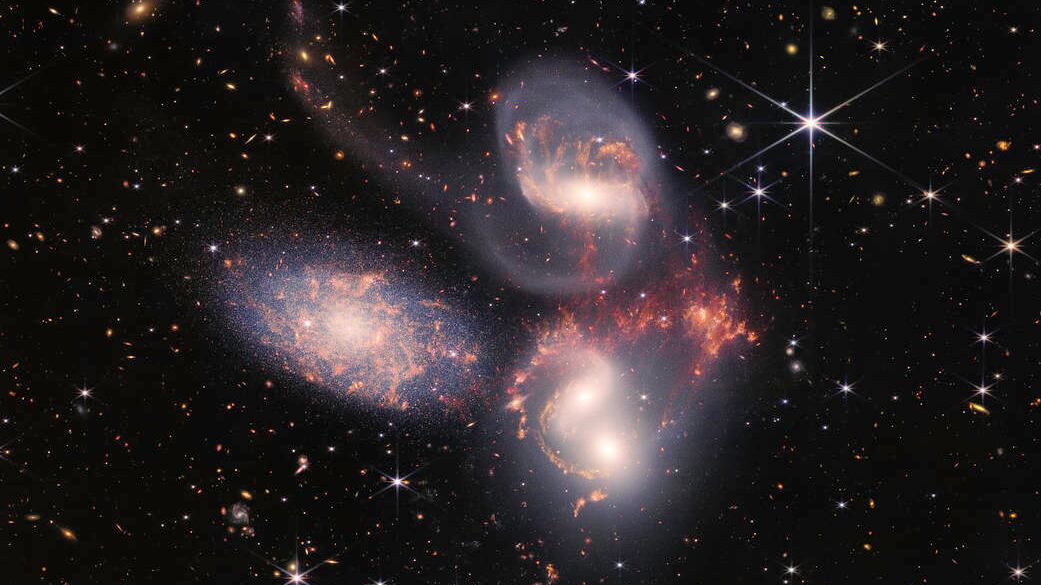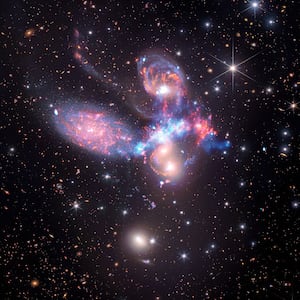One of the most stunning images taken so far by NASA’s powerful James Webb Space Telescope is of Stephan’s Quintet, a group of five galaxies roughly 290 million light-years away. While the first pristine snapshot released last year was jaw-dropping on its own, the Webb team is also teaming up with other telescopes to uncover new insights into the group—including a cataclysmically enormous shockwave caused by an intergalactic collision.
Astronomers using observations from Webb along with the Atacama Large Millimeter/submillimeter Array (ALMA) have discovered a sonic boom several times larger than the Milky Way, caused by colliding galaxies in Stephan’s Quintet. The findings, which were presented at an American Astronomical Society press conference on Jan. 9, revealed insights into gas clouds in Stephan’s Quintet along with the potential formation of a new galaxy.
At the heart of the observation is a galaxy dubbed NGC 7318b—which is in a collision course with its sister galaxy NGC 7318a. However, NGC 7318b is also colliding with the rest of Stephan’s Quintet, creating massive disruptions to the surrounding hydrogen gas clouds.
ADVERTISEMENT
“As this intruder crashes into the group, it is colliding with an old gas streamer that likely was caused by a previous interaction between two of the other galaxies, and is causing a giant shockwave to form,” Philip Appleton, an astronomer at Caltech’s Infrared Processing and Analysis Center and lead investigator on the project, said in a statement.
He explained that the shockwave creates a “highly turbulent” layer, resulting in “unexpected structures” to form as well as the recycling of molecular hydrogen gas. This gas can be used to form stars and, eventually, more galaxies.
However, Appleton also adds that the team doesn’t quite fully understand the science and data behind the gas cycles yet. More research is needed in order to suss out its underlying mechanics and implications.
Luckily, astronomers are more prepared than ever. Now that Webb is in orbit and being paired with powerful radio telescopes like the ALMA, researchers are armed with the best tools in history to study far-flung phenomena occurring in places like Stephan’s Quintet. The team now plans on using spectroscopic telescope arrays in order to study the galaxy group’s X-ray signatures—thereby providing even more insight into the mysterious, chaotic celestial body.
“These new observations have given us some answers, but ultimately showed us just how much we don’t yet know,” said Appleton. He later added, “Essentially, we’ve got one side of the story. Now it’s time to get the other.







